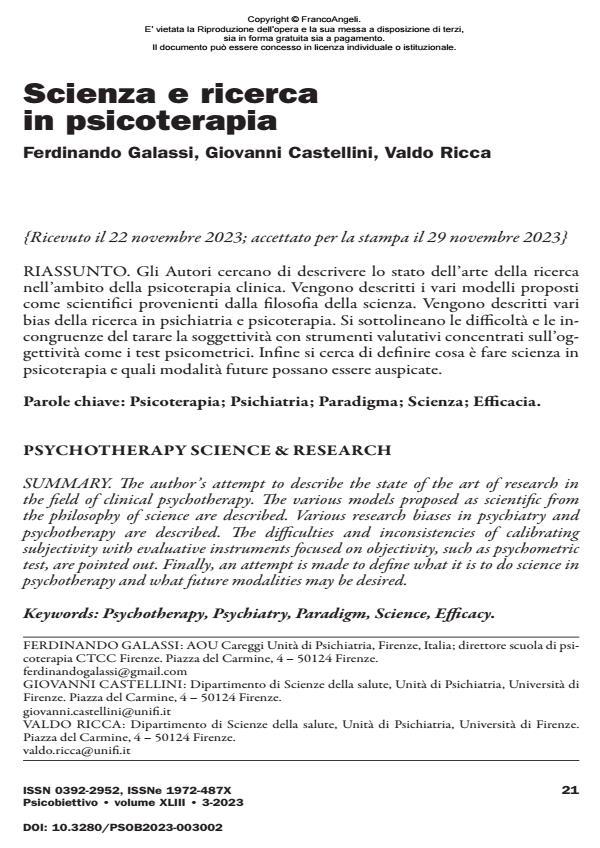Psychotherapy science & research
Journal title PSICOBIETTIVO
Author/s Ferdinando Galassi, Giovanni Castellini, Valdo Ricca
Publishing Year 2024 Issue 2023/3
Language Italian Pages 16 P. 21-36 File size 642 KB
DOI 10.3280/PSOB2023-003002
DOI is like a bar code for intellectual property: to have more infomation
click here
Below, you can see the article first page
If you want to buy this article in PDF format, you can do it, following the instructions to buy download credits

FrancoAngeli is member of Publishers International Linking Association, Inc (PILA), a not-for-profit association which run the CrossRef service enabling links to and from online scholarly content.
The author’s attempt to describe the state of the art of research in the field of clinical psychotherapy. The various models proposed as scientific from the philosophy of science are described. Various research biases in psychiatry and psychotherapy are described. The difficulties and inconsistencies of calibrating subjectivity with evaluative instruments focused on objectivity, such as psychometric test, are pointed out. Finally, an attempt is made to define what it is to do science in psychotherapy and what future modalities may be desired.
Keywords: Psychotherapy, Psychiatry, Paradigm, Science, Efficacy.
Ferdinando Galassi, Giovanni Castellini, Valdo Ricca, Scienza e ricerca in psicoterapia in "PSICOBIETTIVO" 3/2023, pp 21-36, DOI: 10.3280/PSOB2023-003002